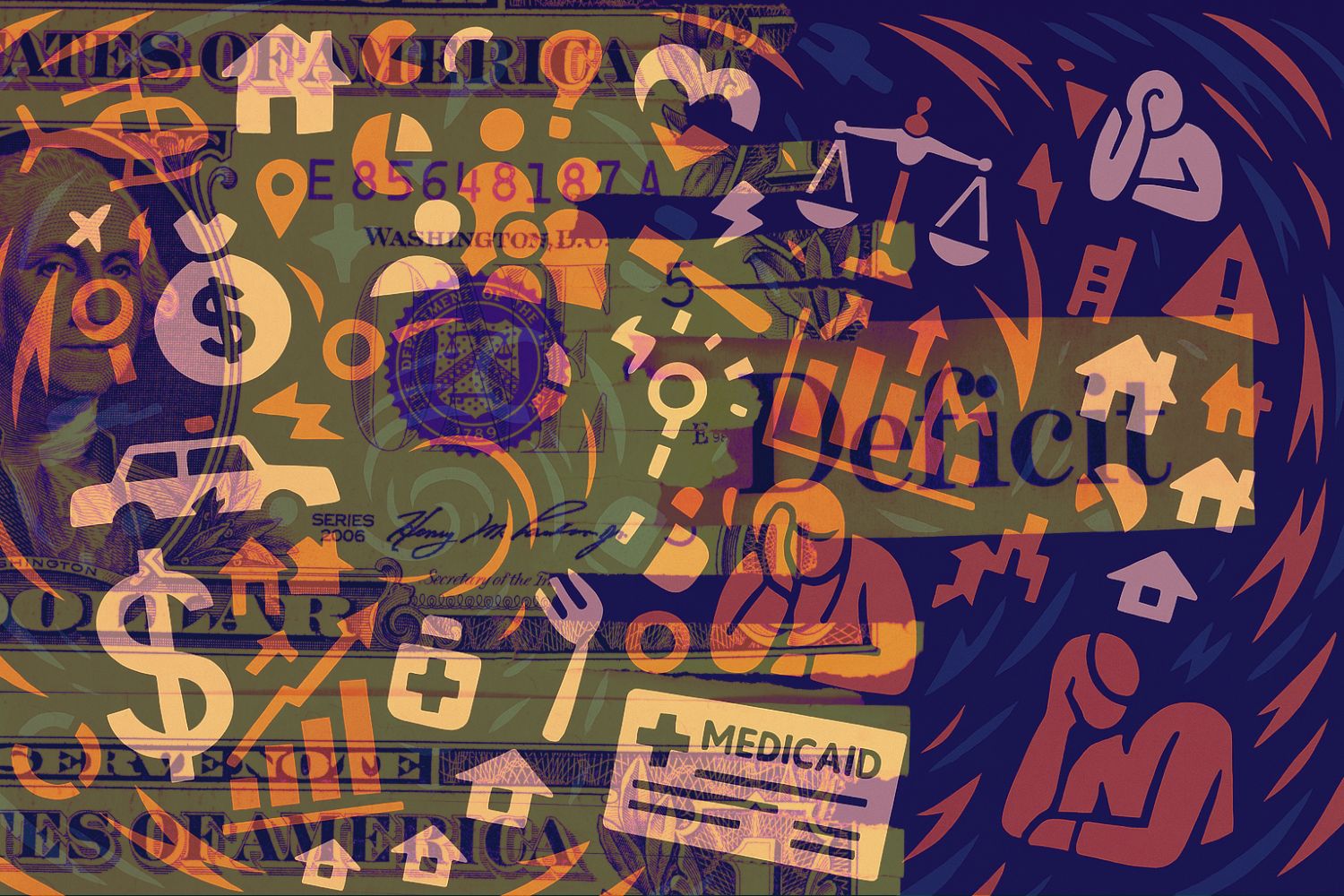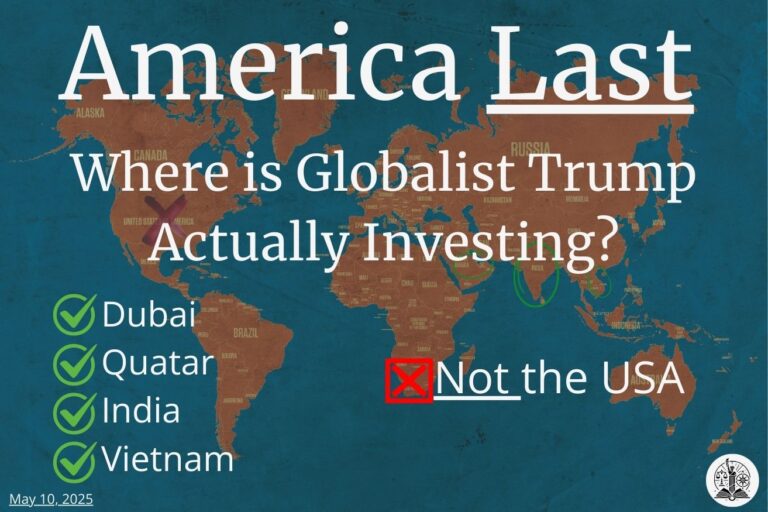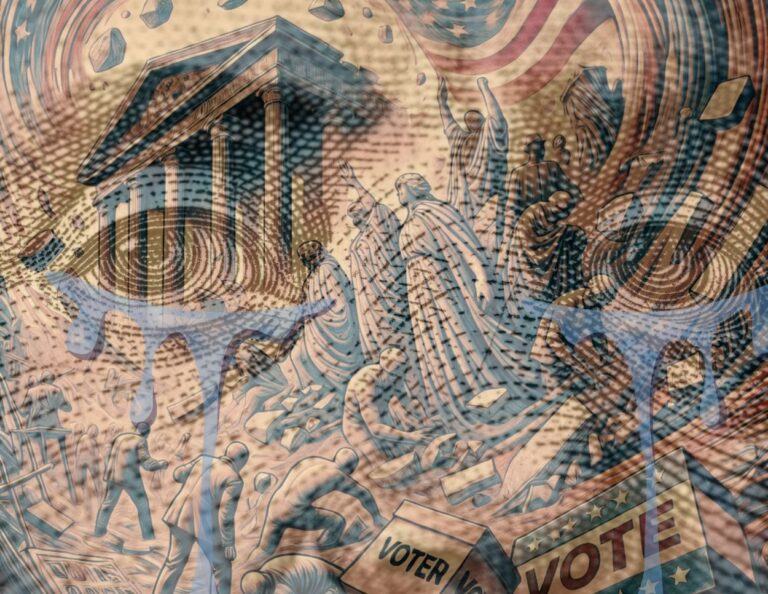What the “One Big Beautiful Bill Act” Actually Does
I’ve built this as an outline for simplicity and clarity.
The bill is long and technical, but the outcomes aren’t abstract—they shape the daily lives of all of us. So I’ve organized the information around real-world impact: who gains, who loses, and what changes.
It’s divided into themes, with each section answering a basic question:
- How does this affect personal finances?
- What happens to daily services and protections?
- What shifts in police and military power?
- What does it mean for the national debt? (spoiler – it massively explodes it)
The structure moves from individuals to systems to the broader picture. It focuses on outcomes—not talking points.
There’s a guiding principle I applied here:
A budget is more than numbers. It’s a moral document.
It shows what we, as a people, are willing to invest in—and what we’re willing to sacrifice.
This bill delivers clear benefits to the wealthy: permanent tax cuts, fewer regulations, and less oversight.
It offers some tax reductions to some working families—but removes safeguards and protections we all count on.
And it strips support from those already living with the most risk—cutting food aid, limiting healthcare, and reducing protections for workers, renters, and vulnerable communities.
It also adds to the national debt—not to invest in shared infrastructure or future growth, but to extend tax advantages and boost military spending.
In short: this is not a neutral budget.
- It shifts resources upward and pushes pain downward.
- That’s the choice being made by the elected leadership in this country.
I’ve laid that out clearly—so the tradeoffs are visible, and the values behind them are too.
Quick disclaimer – this is long and complicated, so some nuance or important details is likely overlooked or oversimplified. But, somewhere, we’ve got to break it down.
1. IMPACT ON FINANCES
1a. The Wealthy
This bill delivers major financial wins to the top 1%.
- Keeps the estate tax exemption at ~$13.6 million per person (was set to revert to ~$7M)
- Extends the 20% deduction for pass-through business income (LLCs, partnerships)
- Loosens the cap on state and local tax (SALT) deductions—helping high earners in NY, CA, NJ
- Leaves all major tax loopholes intact, including carried interest
Estimated benefit:
Top 1% receive $130,000 to $300,000+ per year in tax breaks, plus long-term estate protection.
1b. Typical, Middle-Class Americans
For middle-income households—those earning around $70k–$90k—there are modest, real benefits:
- Trump-era tax cuts extended (worth about $1,500–$2,400/year)
- Child Tax Credit preserved at $2,000 per child
- Tips and overtime pay no longer taxed ($1,000–$2,000/year if applicable)
- Health Savings Account contribution limits increased
Total gain: $6,000–$8,000/year in lower taxes but only if the household is employed, insured, tax-liable, earning tips or overtime pay and a few other conditions.
1c. The Poor
This bill strips support from those with the least margin.
- New work requirements and eligibility limits for SNAP = loss of $150–$200/month in food aid
- Medicaid redeterminations and ER coverage rollback = millions risk losing care
- No refundable tax credits or direct cash support
- No increase in minimum wage, housing assistance, or earned income supports
Net result: The poorest Americans face more costs, fewer services, and no financial relief.
1d. Medicaid (a closer look)
This bill targets Medicaid through budget cuts, eligibility restrictions, and structural changes that make coverage harder to access and easier to lose.
Redetermination Acceleration
- States will be required to reverify eligibility more frequently
- This creates administrative drop-offs—people who are still eligible but lose coverage due to missed paperwork
📊 Estimated loss: 2–4 million people nationally (Urban Institute)
Ends Retroactive Coverage
- Medicaid will no longer cover costs for emergency care incurred before enrollment
- For people in crisis (stroke, accident, pregnancy), this means life-saving care becomes catastrophic debt
Imposes New Work Requirements
- Non-disabled adults without dependents must prove work hours to stay eligible
- Work verification has been shown to disproportionately remove coverage without increasing employment
This hits the working poor hardest—those with irregular jobs, caretaking responsibilities, or unstable housing
Coverage Limits & Reimbursement Cuts
- Caps federal match rates for new expansion states
- Reduces retroactive and long-term care reimbursements
- Raises asset thresholds for home equity, making seniors with modest property ineligible for care
Excludes Populations
- Bars federal funds for care to undocumented immigrants—even for services like emergency stabilization or maternity care
- Limits gender-affirming care coverage in some states
Overall Impact
- Fewer people covered
- More people fall into medical debt
- Rural and low-income hospitals lose reimbursements, threatening closures
- Poor and working-class people face higher risk, fewer protections, and less access to care
2. IMPACT ON DAILY LIFE
2a. The Wealthy
No disruptions. Only deregulation.
- Environmental, labor, and financial protections weakened, but these aren’t systems they rely on (although macro environmental degradation harms us all)
- No cuts to services they use, because they don’t depend on Medicaid, SNAP, OSHA, or disaster recovery grants
- Lower risk, higher flexibility: private healthcare, private security, private infrastructure
- Tax breaks preserved, regulatory burdens reduced
For the wealthiest Americans, this bill does one thing: get government out of their way.
2b. The Typical, Hardworking American Citizen
You might save on taxes. But you’ll pay more elsewhere—and risk more everywhere.
Health & Medical Stability
- Medicaid becomes harder to keep: more paperwork, more drop-offs, no retroactive ER coverage
- No new protections for surprise billing, prescription costs, or medical debt collection
- School-based air quality and health upgrades eliminated, increasing asthma risk for children
- Public health grants cut, reducing local capacity to respond to outbreaks, pollution events, or disasters
Workplace Safety
- OSHA inspection staff cut: fewer investigations, slower enforcement
- No rule on heat exposure, even as warehouse, agriculture, and construction jobs face extreme temperatures
- AI-driven scheduling and surveillance in workplaces left unregulated
- Higher risk of injury or burnout, with less legal recourse
Environmental Protections
- Methane emissions monitoring repealed, increasing pollution in energy-producing regions
- Air pollution control in schools and public buildings defunded
- Water safety programs rolled back: small towns and rural systems lose funding to fix lead, nitrate, and contaminant issues
- Urban heat, flooding, and wildfire preparedness grants eliminated
Disaster Readiness & FEMA Cuts
- Flood mapping and storm planning grants canceled
- Wildfire risk reduction in rural communities defunded
- Coastal and inland flood protection programs eliminated
- FEMA’s local hazard planning support gutted
- Emergency response weakened, especially in smaller or lower-income counties
If your town floods, burns, or loses power—you’ll be waiting longer, paying more, and rebuilding with less help.
Transportation & Infrastructure
- FAA modernization underfunded: more delays, more controller shortages, less safety oversight
- Rural airport and rail corridor investments absent
- EV infrastructure buildouts in rural and working-class corridors canceled
- Public housing retrofits defunded, leaving families with high utility bills and outdated systems
Consumer Protections & Financial Stability
- CFPB enforcement weakened: less accountability for payday lenders, debt collectors, credit card companies
- Civil penalty funds for financial abuse victims cut
- Student loan relief provisions narrowed, deferments harder to access, forgiveness harder to qualify for
Food & Consumer Safety
- USDA food safety and nutrition education grants repealed
- Inspection capacity stressed, especially for meatpacking and agriculture
- SNAP deductions for internet, utilities, or housing removed, reducing benefit value
Housing Costs & Energy Burden
- Low-income energy and weatherization grants rescinded
- Public housing improvements canceled
- Affordable housing and rent stabilization supports defunded
If you rent, rely on public services, or live paycheck to paycheck—you will have fewer protections, more costs, and less room for error.
2c. The Poor
Every risk listed above—but with no cushion, no margin, and no recourse.
- SNAP (food stamps) harder to access, with new work rules and lower allowable deductions
- Medicaid eligibility narrowed, with more red tape and zero grace period for urgent care
- Public housing, water safety, and food inspections weakened or defunded
- No support for energy bills, no help with rent, and no guaranteed access to clean air or water
- More vulnerable to eviction, utility shutoffs, job injury, disaster exposure, and financial abuse
This bill does more than just cut services. It cuts the systems that make poverty survivable.
3. Police, Military and Power
3a. Police
Publicly, the bill leans into “law and order” rhetoric. But structurally, it does the opposite.
Cuts to Local Police Support
- COPS Hiring Program eliminated:
The program—which funded officer recruitment, training, and retention—received $324 million in FY2024. The 2025 bill zeroes it out entirely.
→ 100% cut: local departments lose a primary federal funding stream for staffing. - Byrne-JAG grants fully rescinded:
Previously funded at $770 million, these grants supported equipment, data systems, community policing, and opioid response.
→ 100% cut: no funds provided under the new bill. - Office of Community Oriented Policing Services (COPS Office) dismantled:
Beyond the hiring program, the entire office is zeroed out—including tribal policing, technical assistance, and program development.
→ ~$500 million loss in total COPS-related infrastructure. - DOJ community intervention and reform programs cut:
Includes civil rights oversight, diversion initiatives, and behavioral crisis response programs.
→ Estimated $180 million reduction, including at least $45 million from DOJ Civil Rights Division oversight and $135 million from local initiative grants.
Oversight Weakened
- Limits DOJ authority to investigate civil rights violations in police departments
- Reduces pattern-or-practice enforcement—the legal tool used after George Floyd to intervene in abusive systems
Hundreds of local departments—especially rural and mid-sized—will have fewer resources, less federal support, and no structural accountability.
Rhetorical vs. Structural Support
- The bill uses “defend the police” language
- But delivers de-funding in practice, while protecting departments from scrutiny
3b. Military
Where the police lose resources, the military gains them—massively.
Major Funding Increases
- $65.2 billion in new defense funding
- Shipbuilding and naval capacity
- Missile defense and long-range strike
- Indo-Pacific posture and logistics
- Cybersecurity and space warfare infrastructure
Workforce & Family Support
- Military pay raises funded
- Housing stipends preserved and expanded
- Childcare and family services protected on bases
- No TRICARE or VA benefit cuts mentioned in the bill
Domestic Force Integration
- FAA modernization and supply chain grants include military-civil integration projects
- Funding facilitates rehearsal, deployment, and response infrastructure under homeland security umbrellas
No agency is more structurally supported in this bill than the Department of Defense.
4. THE DEFICIT
The bill claims to reduce spending. But in reality, it increases the deficit—dramatically.
- Extending individual and business tax cuts:
~$3.5 trillion in lost federal revenue over 10 years
(from estate tax breaks, pass-through deductions, SALT cap relief, and other carveouts) - Spending cuts and program rescissions:
Recover, at most, ~$1.2 trillion—primarily by cutting SNAP, Medicaid, housing, climate, education, and enforcement programs - Military spending increases:
Adds at least $65.2 billion in new appropriations, with further increases forecast through FY2026
(DoD and defense contractors gain while domestic programs shrink) - No new revenue raised:
No surtaxes, no corporate clawbacks, no capital gains adjustments—just cuts and debt
Net effect:
Adds $2.3 to $2.9 trillion to the federal deficit over 10 years
- Debt ceiling raised by $4 trillion
This doesn’t reduce debt, it simply authorizes more borrowing to fund tax cuts and defense expansion
To sum it up
This bill makes clear choices.
- It delivers lasting benefits to the wealthy.
- It gives some tax breaks to working families—but removes key protections.
- It cuts support from those with the least margin.
- And it adds to the national debt without investing in shared infrastructure, housing, or care.
These aren’t accidents. They reflect the priorities of the country’s current leadership.
This outline makes those choices visible—so we’re not guessing what’s in the bill, or who it’s for.
Sources Include
https://budget.house.gov/download/one-big-beautiful-bill-act_-full-bill-text
https://www.jct.gov/publications/2024/jcx-3-24
https://www.taxpolicycenter.org/model-estimates/tax-provisions-fy2025
https://www.cbo.gov/publication/58796
https://www.crfb.org/blogs/build-back-better-vs-tax-cuts-and-jobs-act-fiscal-impact-comparison
https://www.urban.org/research/publication/medicaid-coverage-losses-during-redeterminations
https://www.macpac.gov/wp-content/uploads/2023/10/MACPAC-Medicaid-Work-Requirements-Brief.pdf
https://www.kff.org/report-section/medicaid-financing
https://www.congress.gov/crs/products/IF/IF10691.pdf
https://bja.ojp.gov/program/jag/overview
https://www.politico.com/news/2025/05/20/trump-golden-dome-price-tag-00360876
https://www.politico.com/news/2025/04/07/hegseth-trump-1-trillion-defense-budget-00007147
https://www.epa.gov/newsreleases/epa-announces-2024-clean-school-bus-grant-awards
https://www.cbo.gov/publication/59110
https://crsreports.congress.gov/product/pdf/IF/IF11790
https://www.whitehouse.gov/wp-content/uploads/2024/03/budget_fy2025.pdf







